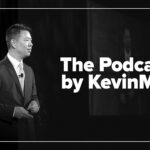“Almost everyone I know has either quit” – my friend paused, “… or died.” She said the “or died” part with a bit more resignation than horror.
We were having this conversation outside of our busy local pub a few weeks ago. Some of us had stepped outside to get some fresh air, and someone pulled out a package of cigarettes and offered them around.
What was once a common occurrence now strikes me as unusual – but not unusual enough.
I used to love to smoke – over 30 years ago. In fact, I didn’t really love to smoke, I was really just uncomfortable when I was not smoking. That is how addiction works.
Growing up in a home of smokers – a world of smokers of that time – it was not surprising that I eventually took it up in high school. Many of my friends smoked. Smoke-free legislation was almost non-existent so whether we were actively lighting up or not, we were all breathing in the same second-hand smoke.
I quit after university. It was hard, but it had gotten old.
I now work at Heart & Stroke and know the data around smoking. But for me, it’s not just numbers; it’s family.
I’m almost the same age as my father was when he died at 61 of lung cancer. He had been a firefighter, and he had smoked for many years – although he had quit in his 40s when his doctor told him to because he had developed heart disease.
My mother died last year at age 83 after smoking for more than 60 years. Yes, she lived to a good age but, make no mistake, smoking killed her. She spent the last eight years of her life – a tenth of all her years – in a care home with chronic obstructive lung disease (COPD) and, eventually, lung cancer.
Hers was a long, slow, and painful decline as she was able to do less and less. She only quit smoking when she no longer had the energy to get herself outside the residence to light up. She spent the last four years of her life confined to her room, breathless and needing a rest after just getting up to use the bathroom. If ever a death was a blessed release, it was hers.
By the time my own children became teenagers, society had done a pretty good job of “de-normalizing” smoking. It seemed like hardly anybody smoked, and if they did, there were very few places where they were allowed to do it.
The problem appeared almost solved, and we were ushering in a new ‘smoke-free’ generation. Sadly, this was not to be. The always enterprising tobacco industry was busily creating new temptations.
My son, now in his early 20s, vapes regularly, as do so many of his friends. They started when they were teenagers. They were seduced by aggressive marketing, tempted by delicious and innocent-sounding candy and fruit flavors, and fatally hooked by the nicotine.
Astonishingly, one in four grade 10-12 students in Canada vape, and teens who vape have been found to have four times higher odds of using tobacco in the future.
Big Tobacco’s newest evil offering is nicotine pouches. Official communications say it is a cessation aid for adults, but the marketing says something else altogether. Health Minister Mark Holland called them out appropriately: “Stay the hell away from our kids.”
It is depressing and frustrating to see how nicotine addiction continues through the generations. Smoking continues to be the leading preventable cause of premature death in Canada, killing 46,000 people every year.
Big Tobacco needs to be held responsible.
Thankfully, after more than 25 years of litigation in Canada, a draft settlement of lawsuits from provincial governments and a class-action suit was reached with the three big tobacco companies. Creditors voted in favour of the agreement on December 12, 2024, and final ratification is expected to follow in the coming months.
The original claims totaled more than $500 billion. The proposed settlement is $32.5 billion, with the biggest share going to the provinces and territories at $24.7 million and $6.6 billion going to the class action plaintiffs.
That leaves $1 billion for a foundation with a limited purpose of funding research around diagnosis and treatment of tobacco-related illness.
It’s not good enough.
We need the foundation funds to help people quit smoking and prevent others from starting in the first place. Rather than just studying tobacco-related diseases, let’s work to avoid them by preventing use.
This is a historic, once-in-a-lifetime opportunity.
My family is just one of millions of Canadian families that has already paid too high a price to the tobacco industry for the pain of nicotine addiction. It’s past time it all stopped.
Stephanie Lawrence is a communications manager.


















![How should kratom be regulated? [PODCAST]](https://kevinmd.com/wp-content/uploads/Design-2-190x100.jpg)
![Understanding the unseen role of back-to-school diagnostics [PODCAST]](https://kevinmd.com/wp-content/uploads/Design-3-1-190x100.jpg)


